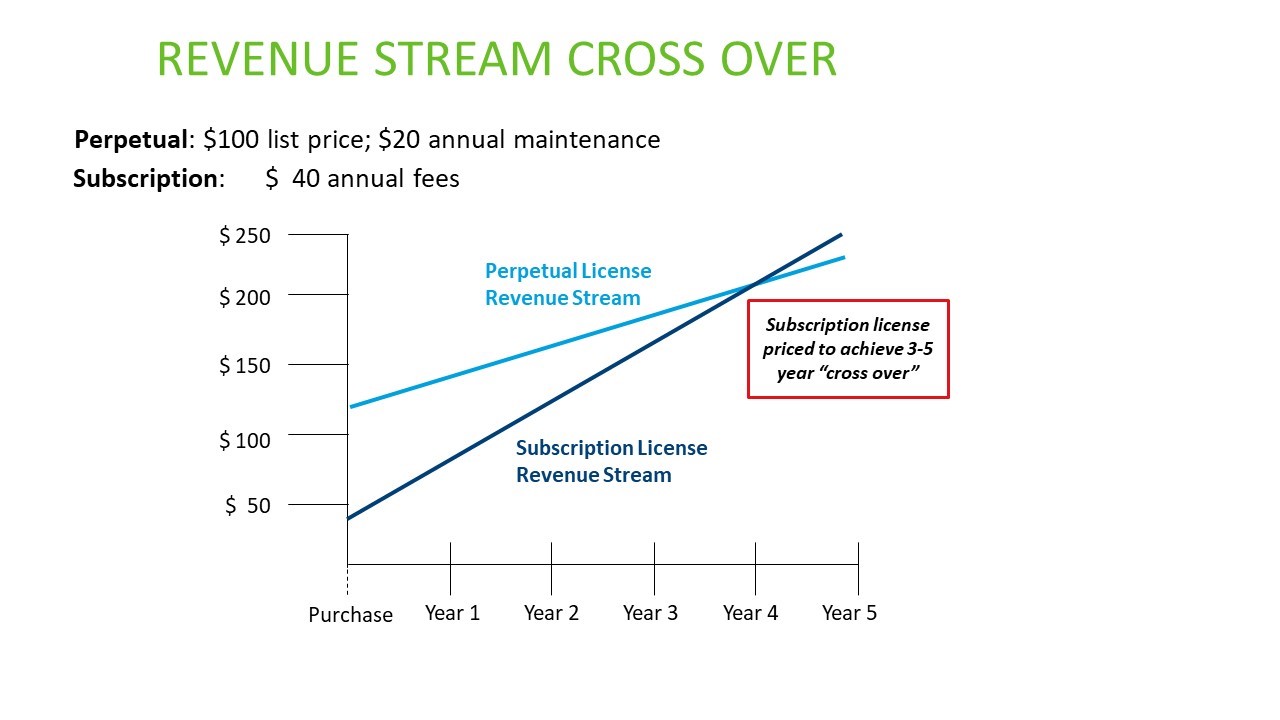Considerations For Implementing A Subscription Software Model
By Cris Wendt, Flexera

When a software company offers its products through subscriptions, it involves more than just a monetization model. Subscription reflects the way you run your business, impacting all of your departments — pricing, contracts, sales compensation, business metrics and, ultimately, customer success. Independent from a deployment model, subscription is used for software-as-a-service (SaaS), on-premises software, and devices.
As you implement a framework for moving to subscription, thoughtful consideration of your needs — and your customers’ — are important parts of the plan. Wherever you are in the transition process, understanding the keys to an effective implementation will help ensure the success of your initiatives.
Making The Decision To Move To Subscription
As your company makes the decision to move to subscription, it must evaluate how the change will impact your revenue stream. The perpetual model ensures payment at delivery, where revenue recognition happens up-front. The financial adjustment of moving to a subscription model — where payments are periodic and revenue is ratable — may seem like a stumbling block on the subscription journey, since revenue may take an early dip and the future of your revenue stream may seem uncertain.
This is a valid concern but offering subscription-based software will ultimately deliver a predictable, recurring revenue stream. Within 3-5 years, depending on your market, most companies reach a cross-over point at which the revenue stream of your subscription license will overtake that of the perpetual model (including list price and annual maintenance).

How Will Your Subscriptions Resonate With Customers?
Of course, your subscription offerings must appeal to and meet your customers’ requirements. With subscriptions, customers have an expectation of continuous value delivery to offset the higher long-term total cost of ownership. Taking a user-centered approach to how you deliver and support your subscription offering can support long-term customer success and lead to high lifetime customer value.
Subscriptions often appeal to customers because of:
- Lower cost of entry;
- Wider solution access for a particular spend;
- The ability to shift capital expenditures to operating expenses;
- Alignment of spending and usage needs.
Benefits Of Moving To Subscription-Based Software: The Supplier’s View
As a supplier, your company may recognize varied benefits of deploying a subscription model for your SaaS, on-prem, or device software. First and foremost, subscriptions present a renewal opportunity, provided you offer a meaningful value proposition and a customer experience that leads to customer retention beyond the cross-over point. A software monetization platform can provide usage transparency to your customers and process automation that helps you achieve higher renewal rates.
Subscription offerings generally provide a lower cost of entry for customers, allowing you to create new customer relationships. Not only will you be able to open more customer accounts, you will have the opportunity to grow your market penetration. Subscriptions also reduce the pressure for you to offer discounts, which are commonly requested (and provided) for sizeable, up-front perpetual transactions, and all too often continue far longer than anticipated. Finally, the wide variety of license options available through subscriptions creates broader market appeal for your software, facilitating deployments that align well with various customers’ needs.
 About The Author
About The Author
Cris Wendt, Principal Strategy Consultant with Flexera Global Consulting Services Organization, focuses on strategic business model issues relating to implementing licensing and internal change management aspects of business transformation.
